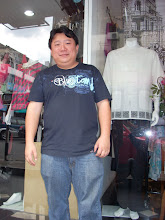

 With a new road and a bridge across Batang Kayan river, Lundu has suddenly become very accessible. Lundu, renowned for its unspoilt beaches and Gunung Gading National Park,
that houses the Rafflesia, is currently only accessible from Kuching via a new bridge across the Batang Kayan River.
The bridge was opened on July 7, 2005. The road from Kuching to Lundu measures about 90 km.
In the 19th Century, an Iban longhouse stood by the Batang Kayan river. It was defended by a palisade, brass cannon, and a stout boom. A few Chinese farmers, former gold or antimony miners, found the riches of a fertile soil more lasting than a brief harvest of minerals. No visitor could miss their neatly tended vegetable gardens and pepper farms on the slopes.
In the 1970s, Lundu lay at the end of a long trip on a rough road. The people still earned their living by farming and fishing, and a few specialties like charcoal burning and jellyfish processing. Every few years, a windfall of illipe nuts brought a brief flush of money into the pockets of anyone who was prepared to rough it in the jungle and collect the winged bounty as it dropped to earth.
Land was opened up for oil palm and cocoa schemes in the early 80s. The State’s first experiment in sericulture followed and bees were farmed for honey in acacia forests.
The road from Kuching is straightened and sealed. What used to be a four-hour trip of the bone-shaking kind is accomplished in one smooth hour.
With a new road and a bridge across Batang Kayan river, Lundu has suddenly become very accessible. Lundu, renowned for its unspoilt beaches and Gunung Gading National Park,
that houses the Rafflesia, is currently only accessible from Kuching via a new bridge across the Batang Kayan River.
The bridge was opened on July 7, 2005. The road from Kuching to Lundu measures about 90 km.
In the 19th Century, an Iban longhouse stood by the Batang Kayan river. It was defended by a palisade, brass cannon, and a stout boom. A few Chinese farmers, former gold or antimony miners, found the riches of a fertile soil more lasting than a brief harvest of minerals. No visitor could miss their neatly tended vegetable gardens and pepper farms on the slopes.
In the 1970s, Lundu lay at the end of a long trip on a rough road. The people still earned their living by farming and fishing, and a few specialties like charcoal burning and jellyfish processing. Every few years, a windfall of illipe nuts brought a brief flush of money into the pockets of anyone who was prepared to rough it in the jungle and collect the winged bounty as it dropped to earth.
Land was opened up for oil palm and cocoa schemes in the early 80s. The State’s first experiment in sericulture followed and bees were farmed for honey in acacia forests.
The road from Kuching is straightened and sealed. What used to be a four-hour trip of the bone-shaking kind is accomplished in one smooth hour.
Some visitors come to Lundu District for S, S and S: Sand, Sun and Sea. Even in the old days of poor roads, the wide, clean sands of Sematan beach, half an hour’s drive from Lundu, were a popular holiday resort. Today the hobby fishermen are heading for Sematan, eager to catch the barramundi introduced here by the Agriculture Department. The attraction is the sea itself, for swimming, diving and playing. There’s fresh seafood when the boats come in, crabs crawl on the rocks, and there’s a lively ikan pusu industry at the right season. When schools of the tiny anchovies swarm, the whole village is out there in the chest-deep water, hanging on to one long, fine net. Willing tourists are press-ganged into the operation, particularly the taller fellows!
Other visitors go to the Gunung Gading National Park (1983).Today it is easily accessible; there are chalets for overnight accommodation. Gunung Gading’s claim to fame, besides the waterfall and a very diverse bird population, is the Rafflesia. This malodorous wonder is the world’s biggest bloom, reaching diameters of up to one metre. Rafflesia buds resembling purple cabbages lie in the dank jungle for months, until the time is right for the bright orange petals to unfold, revealing a variously dotted centre with bright tufts and emitting a very distinct ... scent.| Where to stay: Numerous chalets and small ‘resorts’ have sprung up, especially in Siar, Pandan and Sematan. Drive there and ask around. The Rafflesia flower grows up to a meter across and is among the strangest plants around. Today it grows extremely rare in the world. Despite having such a huge flower the plant has no roots since it is parasitic. It steals its nutrients from plants to which it attaches itself. The flower also has a unique scent - of rotting meat. This attracts insects that pollinate this strange bloom. There is no way of telling when a Rafflesia will pop up. But one of the best places to see them is the Gunung Gading National Park near Lundu, about two hours drive from Kuching. The park rangers keep careful watch on sprouting Rafflesia and if you call the park beforehand, they will tell you the chances of seeing one in bloom. |


No comments:
Post a Comment